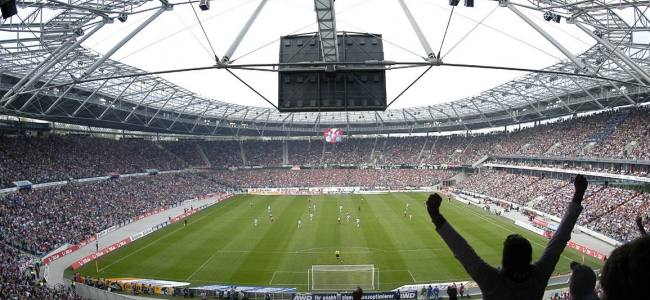
Cardiac arrest in spectators in German football stadiums
From: Luiz T, Preisegger T, Rombach D, Madler C. – Deutsches Zentrum für Notfallmedizin & Informationstechnologie, DENIT, Fraunhofer
BACKGROUND – Provision of medical care is an important element of safety precautions for visitors of sports arenas. The organizational requirements are especially high if cardiac arrest occurs; how this scenario is managed may thus serve as the ultimate indicator of the quality of stadium medical care. The objectives of this study were to analyze the structures and the resources available for the medical care of spectators in German professional soccer stadiums and to identify the frequency and the primary resuscitation success of cardiac arrest.
MATERIAL AND METHODS – In 2011 a questionnaire-based survey was performed among the clubs of the first and second German soccer leagues regarding medical care of spectators during the seasons 2008/2009 and 2009/2010. The focus was on the qualifications of emergency teams, the equipment and the incidence of cardiac arrest.
RESULTS – A total of 15 stadiums were included (38 %) in the survey. The mean number of physicians and emergency medical technicians on site was 0.6/10,000 seats and 16/10,000 seats, respectively. Of the latter, a mean of 82 % (minimum 20 % and maximum 100 %) had received training with automatic external defibrillators. In 87 % of the stadiums regular advanced life support training (ALS) was required. The mean number of defibrillators per stadium was 2.8/10,000 seats (minimum 1.3 and maximum 3.8) including 1.7 automatic defibrillators (minimum 0.4 and maximum 2.8). For patient transport, a mean of 0.65 ALS ambulance vehicles per 10,000 seats (minimum 0.14 and maximum 1.46) were available on site. In all stadiums staff members were connected via mobile radio communication with the stadium medical control room. A total of 52 cardiac arrests (= 0.25/100,000 spectators) were recorded of which 96 % of the patients were transported to hospitals with spontaneous circulation.
CONCLUSIONS – Cardiac arrests are not a rare occurrence in German soccer stadiums. The participating stadiums are overall well prepared for such incidents in terms of organization, staff and technology and due to short response times, the resuscitation success by far surpasses that of the standard emergency medical services. These findings may in addition serve as a motivational example to start resuscitation early in public information campaigns.
Read this article in PUBLIMED (English)
Read this article in FULLTEXT (German)


